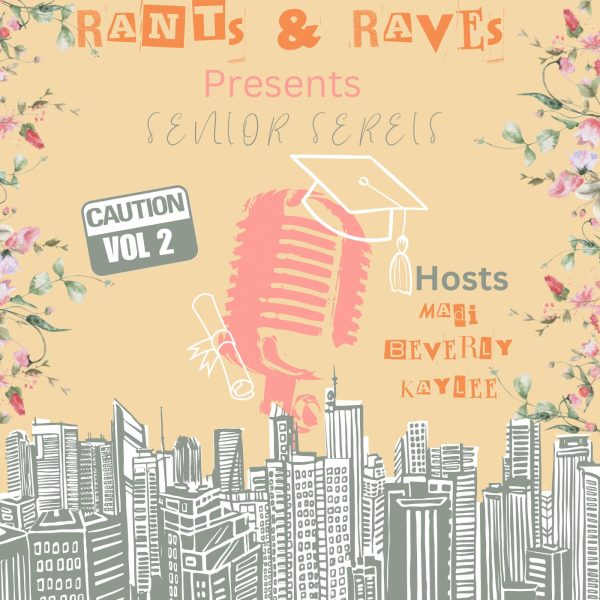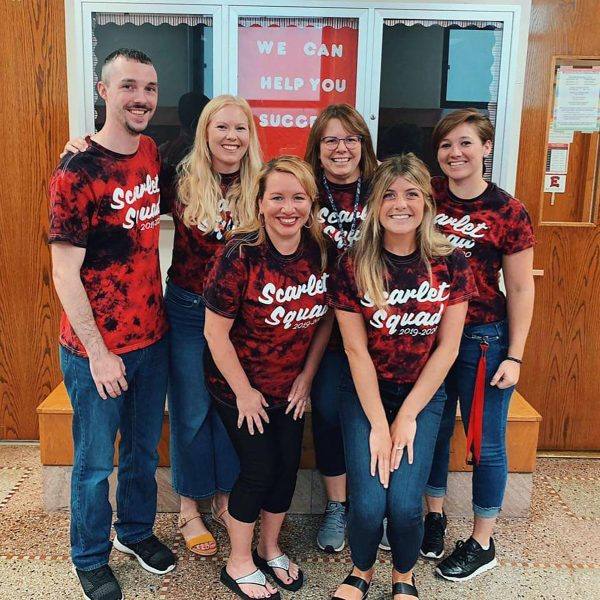Consequences of no consequences
It seems like more and more kids can get away with whatever they want at school. Read to learn how this will affect them in the future.
May 21, 2019
On Wednesday, March 27, a police officer confronted a group of students hanging around the DART Central Station. One student refused to leave, and an argument broke out, prompting the officer to detain the student. The students then surrounded the officer and attempted to assault him, one reaching for the officer’s gun. Three students ended up being arrested, and charged with trespassing and interference with official actions.
This is not the only incident of students acting out against the law. On Wednesday, December 14th, 2014, five East High students left school during lunch to rob Tradesmen Community Credit Union. One student dropped off three, who went into the bank. The fifth student picked them up. All five were charged with first degree robbery. Jail time for this crime ranges from five to 25 years. Incidents like these can be attributed to the lack of consequences at school by some.
“I feel like our school is more of a community center than an institution of education. I don’t think that’s what a school should look like,” English teacher Mrs. Shawna Green said.
At any time during the day, students can be seen wandering the hallways of East High. This is a result of inadequate methods for getting kids to class and keeping kids in class. Along with classes required to graduate, East offers a variety of AP classes, electives, sports, clubs, and activities. The opportunities available to students are far and wide, but more and more they are seen as optional. Students do not take advantage of the opportunities they get here.
“It’s been a downward spiral. What has become normal is not conducive to learning,” Green said.
It is not abnormal for students to come to class 20 or more minutes late or miss entire blocks of class a day. This results in low grades and low numbers of students actually in class. When these students do finally decide to come to class, it means minutes of wasted time for the students who understand the material already, because backtracking will likely occur to help the skippers and late-comers.
“Negative behavior of classmates makes it hard to focus, especially if it draws the attention of the teachers as well and makes the class stop,” sophomore Marissa Thompson said.
“There’s very little incentive to engage. You have to simply want it. You have to show up to school and really want to engage in your education. There are very few scaffolds to support that,” Green said.
Students are responsible for their own learning, however, the actions of students who do not care about school affect those who do negatively. Teachers spend class period after class period trying to keep students on track and focused, which can be grating on the kids who already behave. It can decrease their drive to succeed in class. In some cases, students who previously focused well to adopt the behaviors of their classmates, seeing as they will be reprimanded anyway. Teachers witness most of the disrespectful behavior outside of their classrooms
“From a human point of view, I’ve been told things I can go do to myself, I get told off so many times a day when I go through the hallways and do my job of trying to get people to class. It’s never an angry aggressive stance from me, but it gets blatantly ignored. Sometimes I think I’m invisible,” Green said.
Teachers are people too, believe it or not. Students react with their emotions on their sleeve. Teachers are affected by the things students say, but they can’t react in the way that students often do, because they could face consequences in their jobs.
“I rarely have the kind of conflicts with students in my own classroom that I do in the hallway. They know that I care about about them and that I respect them,” Green said.
Students trust people that they know, and that is difficult in a school with 2,163 students and 300+ staff members. There are many staff members who have very strong relationships with students, only, it is hard to build these relationships when students do not come to class in the first place.
“It’s a small portion of our population, but I think that’s what changes what normal. That becomes perceived as a greater number of our students than it is,” Green said.
Teachers spend a lot of class time trying to keep students on track, which cuts out of time spent on teaching. Teachers often struggle to get the attention of students in their class, and it’s even harder in the hallway. According to Green, students hesitate to listen to adults that they do not know.
“I think all I would like in my interactions with teenagers I don’t know is to give me the first 30 seconds, assume that I’m a nice person who has your best interest at heart, and I might know something” Green said.
Green still believes that respect needs to be earned. Similar to how those accused of a crime are innocent until proven guilty, people should be respected until they prove they don’t deserve it.
“I don’t think respect should be given away, it has to be earned; however, I think the opening gambit should be respect until you prove me otherwise,” Green said.
For some students, giving respect doesn’t come easy, especially to law enforcement. Many students have experienced the arrest of a parent, or the fear of unjust accusations. This does not, however, justify disrespect.
“Involving the law, it allows me to build relationships with people, and that goes back to I get to see these kids everyday and become a familiar face. It helps them see the police department in a positive light, when they may have only had negative interactions with police” School Resource Officer Trudy Simonson said. Simonson is at East every day and helps with things from violent conflicts to students’ personal issues.
The cons of having police involved in schools are far and few between. The presence of law enforcement in schools can promote good perceptions of police officers, among other things. It gives the school another resource to enforce good behaviors, and worse case scenario, it provides protection from students who get out of control.
“I wouldn’t want law enforcement to be our only took in the toolbox. Corrective actions: you’ve broken something, you need to fix it,” Green said.
Most of the time, a student can do or say something and never have to apologize for their actions. Restorative discipline is something that teachers at East talk about frequently and have been trained on. It does not work if students do not take responsibility for the things they say and do. This frees students from the liability of their actions.
“I can report it, and nine times out of ten nothing happens, so that doesn’t feel like a good use of my time. Or they end up arrested and that doesn’t feel good either. I’m struggling to know how to do right by students,” Green said.
“Teachers aren’t a threat, whereas law enforcement could be, which is unfortunate. That’s where I take pride in building relationships with students, even if I arrest them. 9/10, they’re not mad at me for taking them to jail, but they can respect me because they know that I have a job to do,” Simonson said.
Very rarely do people get to build relationships with police in the way students can at school. More and more, police officers are associated with brutality and unjustified actions than they are with the positive influences they have in the community.
“There’s a lot of times where kids will give me a hug, even if I’m taking them to jail. They feel apologetic that they’ve disappointed me, which is good, because they know that I care,” Simonson said.
Accountability is an important factor in how a student acts at school. The presence of law enforcement is that accountability for some students. For others, accountability comes with a teacher to whom they have a connection. Students, however, can be the biggest source if accountability.
“Students can help each other through not allowing their friends to behave badly and reminding others of expectations. Classes who work as a team create a strong bond that leads to a more enjoyable experience,” Thompson said.
Setting an example for peers is really important. There are a variety of negative influences to be found in today’s society, so being a positive influence at school is important. In many classes and activities, the passion of the people involved is what encourages others to show up and participate. Now, it can be hard to be passionate about Algebra or Chemistry, but showing up and participating can help make the class productive and enjoyable for all.
“My AP Lang class has students that are all willing to learn and behave, this class is one of my favorite classes because everyone is engaged and we all work as a team,” Thompson said.
Students realize that the perception of the school is up to them. Getting involved in the community can be helpful when trying to improve the reputation of the school, even if it’s as simple as cleaning up trash outside.
“The police aren’t called to the good things, they’re called to the bad things. The news isn’t gonna know about the good things. Getting involved with the community is one way to show the good in East High. If a group of kids went over and cleaned up that west lot, that would be a good representation of East,” Simonson said. 






